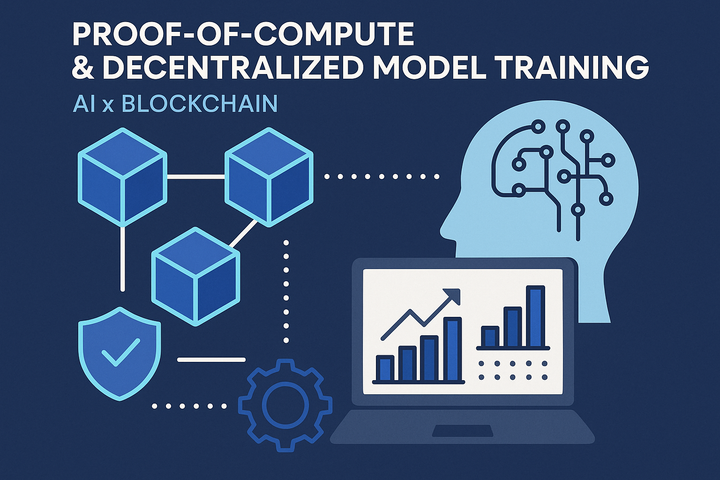The Crypto Router War: Why Mitosis Could Eat LI.FI, Jumper, and the Rest

Introduction
The cryptocurrency landscape is evolving rapidly, with new technologies and protocols emerging to address the challenges of cross-chain transactions. One of the most significant developments in this space is the rise of cross-chain routers, which facilitate the movement of assets across different blockchain networks. In this article, we will explore the current state of cross-chain routers, focusing on prominent players like LI.FI, Jumper, and Socket, and examine how Mitosis could potentially disrupt this ecosystem. We will delve into the mechanics of these routers, compare their features, and discuss the implications of Mitosis as a foundational layer for future protocols.
1. Understanding Cross-Chain Routers
Cross-chain routers are essential components of the decentralized finance (DeFi) ecosystem, enabling users to transfer assets seamlessly between different blockchains. Unlike traditional bridges, which connect two specific chains, routers aggregate multiple bridges and protocols to provide users with the best possible route for their transactions. This aggregation is crucial for optimizing speed, cost, and security.
1.1. Current Router Stack
- LI.FI
- Overview: LI.FI is a cross-chain router that aggregates various bridges and protocols to facilitate asset transfers. It aims to provide users with the best rates and lowest fees by comparing multiple options.
- Features: LI.FI offers a user-friendly interface, supports a wide range of assets, and provides real-time data on transaction costs and speeds. It also integrates with various DeFi protocols, enhancing its utility.
- Strengths: LI.FI's strength lies in its comprehensive aggregation of bridges, allowing users to choose the most efficient route for their transactions.
- Jumper
- Overview: Jumper is another cross-chain router that focuses on providing fast and cost-effective asset transfers. It emphasizes user experience and aims to simplify the process of cross-chain transactions.
- Features: Jumper offers a streamlined interface, supports multiple blockchains, and provides users with real-time information on transaction speeds and costs.
- Strengths: Jumper's focus on speed and user experience makes it an attractive option for users looking to transfer assets quickly.
- Socket
- Overview: Socket is a cross-chain router that aims to provide a seamless experience for users transferring assets between different blockchains. It focuses on security and reliability.
- Features: Socket offers a robust security model, supports a wide range of assets, and provides users with detailed information on transaction costs and speeds.
- Strengths: Socket's emphasis on security and reliability makes it a strong contender in the cross-chain router space.
2. Mitosis: A New Paradigm
Mitosis is a new entrant in the cross-chain router space that has the potential to disrupt existing players like LI.FI, Jumper, and Socket. Unlike traditional routers that aggregate existing bridges, Mitosis aims to create a foundational layer that can evolve and adapt to the needs of the DeFi ecosystem.
2.1. Key Features of Mitosis
- Speed: Mitosis is designed to optimize transaction speeds by utilizing advanced algorithms that determine the most efficient routes for asset transfers. This focus on speed could give it a competitive edge over existing routers.
- Depth: Mitosis aims to provide deep liquidity pools that can accommodate large transactions without significant slippage. This is crucial for users looking to transfer substantial amounts of assets across chains.
- Native Pools: Mitosis could introduce native liquidity pools that are specifically designed for cross-chain transactions. This would allow users to access liquidity directly within the Mitosis ecosystem, reducing reliance on external bridges.
2.2. Mitosis vs. Aggregators
When comparing Mitosis to existing aggregators like LI.FI, Jumper, and Socket, several key differences emerge:
- Aggregation vs. Foundation: While existing routers aggregate multiple bridges, Mitosis aims to serve as a foundational layer that can evolve and adapt to the needs of the ecosystem. This could allow for greater flexibility and innovation in cross-chain transactions.
- Speed and Efficiency: Mitosis's focus on optimizing transaction speeds and reducing costs could make it a more attractive option for users looking to transfer assets quickly and efficiently.
- Liquidity Solutions: By introducing native liquidity pools, Mitosis could provide users with better access to liquidity and reduce the reliance on external sources.
3. Could Protocols Build on Top of Mitosis?
One of the most exciting possibilities for Mitosis is the potential for protocols to build on top of its foundational layer. This could lead to the development of new applications and services that leverage Mitosis's capabilities.
3.1. Potential Use Cases
- Decentralized Exchanges (DEXs): DEXs could integrate Mitosis to facilitate cross-chain trading, allowing users to swap assets across different blockchains seamlessly.
- Lending and Borrowing Platforms: Lending and borrowing platforms could leverage Mitosis to enhance their offerings by enabling users to access liquidity across multiple blockchains. This would allow for more efficient collateral management and broaden the range of assets available for lending and borrowing.
- Yield Farming: Yield farming protocols could utilize Mitosis to optimize returns by accessing liquidity from various chains. By integrating Mitosis, these platforms could offer users better yields through cross-chain strategies.
- NFT Marketplaces: Non-fungible token (NFT) marketplaces could benefit from Mitosis by facilitating the transfer of NFTs across different blockchains. This would enhance the liquidity and accessibility of NFTs, allowing users to trade them more freely.
4. The Future of Cross-Chain Transactions
As the DeFi ecosystem continues to evolve, the demand for efficient and reliable cross-chain solutions will only grow. Mitosis has the potential to redefine how assets are transferred between blockchains, positioning itself as a critical infrastructure layer in the crypto space.
4.1. Challenges Ahead
While Mitosis presents exciting opportunities, it also faces challenges that must be addressed for it to succeed:
- Adoption: Gaining traction among users and developers will be crucial. Mitosis must demonstrate its advantages over existing routers to encourage adoption.
- Security: Ensuring the security of transactions and user assets will be paramount. Mitosis must implement robust security measures to build trust within the community.
- Interoperability: Mitosis will need to ensure compatibility with various blockchains and protocols to maximize its utility and reach.
Conclusion
The crypto router war is heating up, and Mitosis stands poised to disrupt the current landscape dominated by LI.FI, Jumper, and Socket. By focusing on speed, depth, and native liquidity pools, Mitosis could redefine cross-chain transactions and serve as a foundational layer for future protocols. As the DeFi ecosystem continues to grow, the evolution of cross-chain routers like Mitosis will play a pivotal role in shaping the future of decentralized finance.
In the coming years, we can expect to see innovative applications built on top of Mitosis, further enhancing its value proposition and solidifying its place in the crypto ecosystem. The journey ahead is filled with potential, and Mitosis could very well lead the charge in the next phase of cross-chain evolution.
Resources and Further Reading
The Crypto Router War features key players like Mitosis, LI.FI, and Jumper, each offering unique cross-chain solutions. For insights and resources, you can explore the following links:
- Jumper: Crypto's Everything Exchange
- Across V3, Solana on Jumper & More!
- Rootstock x Jumper: Guide to Bridging Rootstock on LI.FI
- LI.FI vs. Other Aggregators
- Presenting Jumper: Crypto's Everything Exchange
- LiFi/Jumper - Rekt
These resources provide a comprehensive overview of the current landscape and developments in the crypto router space.
Additional Resources
Here are more valuable links that can enhance your understanding of cross-chain solutions and the crypto ecosystem:
- LI.FI Protocol Overview: LI.FI Documentation
- Join the LI.FI Community: LI.FI Discord Server
- Follow LI.FI on Twitter: LI.FI Twitter
- Subscribe to LI.FI's Newsletter: LI.FI Substack
- Research Articles by LI.FI: LI.FI Research on Medium
Key Features of Jumper
- Cross-Chain Swaps: Jumper allows users to swap any token across multiple blockchains seamlessly.
- Aggregated Liquidity: It combines liquidity from various DEXs and bridges, optimizing for cost and speed.
- User -Friendly Interface: Designed for both experienced users and newcomers to navigate the crypto space easily.
These resources and features will help you stay informed and engaged with the latest developments in the cross-chain landscape.



Comments ()